FSPA Spring Fling, Poetry/Photography Workshop
On April 9 and 10, the Florida State Poets Association held its "Spring Fling" in the town of Hernando. This year's theme was Hawaiian Luau, which our host chapter Sunshine Poets carried forward in marvelous fashion!
Workshops this past weekend included Val Esker's "Giving Voice to Your Verse," with pointers on performance; Joyce Shiver's "Laugh a Little: writing the humor poem;" and my presentation, "Worth a Thousand Words: Using Photographic Principles in Poetry." During the Spring Fling's planning phase, I was asked to give "a workshop on poetry and photography" because of my involvement in both. I'd already given a workshop in Ekphrastic poetry -- poetry based on works of art (including photos) -- so I wanted to do something different this time. (Continued...)
A single poem can include many elements. I focused solely on visual elements and on ways to convey different visual effects, matching photographic techniques to their poetic counterparts. These effects can also be combined in a single poem and can overlay each other.
Pointers on technique came from Photography: A Practical Guide, by Alisa McWhinnie and Philip Andrews (Carlton Books, 2004; referred to below as PAPG). The photos are mine. Along with their counterpart poems, they covered the topics of landscape, portrait, still-life, and close-up/macro shots. Here's an online version of my handout, incorporating some of my comments.
1. Landscape: Framing
"One of the most pleasing ways to lead your viewer into a landscape photograph is by framing a distant focal point with an object in the foreground. Boughs of trees do this perfectly, as do gateways, arches, and other architectural features." -- PAPG
Photographic Example: a shot taken from my back yard on a foggy morning:

Poetic Example: excerpt from "Grandpa Vogt’s—1959" by Ted Kooser:
... Everyone’s heads have turned
to elongate the table’s view -- a last supper twisted
toward a horizon where the Christmas tree, crowned
by a window, sets into itself half inclined.
Kooser's entire poem presents a photograph: the color (and texture) of the turkey, the pattern on the potato bowl, and more. This excerpted passage shows a particular photographic aspect: framing. In this case, "everyone's heads" provide the same framing as the trees in the foreground of my photo of morning fog, for both elongate the view. The Christmas tree sits in the photographic center in the poem, much as the fog-shrouded tree does in the photo.
Kooser's poem incorporates other photographic concepts -- for example, the close-up in "rubbing lightly wrinkled hands atop their laps." (Click on the link to access the full poem.)
2. Landscape: Viewpoint
"Taking a low viewpoint can dramatically increase the impact of a photograph, especially when combined with a wideangle lens. By crouching down low, you suddenly find you have a strong foreground interest with which to draw the observer into the picture. If shooting from a low viewpoint, look out for strong shapes and texture and, in particular, diagonal lines that start from the outer edges of the frame and extend to a point within the frame….Taking the other extreme, you could find a spot which allows you to look down on the landscape unfolding in front of you. This will give an immense feeling of space and will allow you to include the many features -- both natural and man-made -- which are characteristic of the modern landscape." -- PAPG
Photographic Example (a): Darwin Steps, Bartolome, Galapagos Islands (shooting from low viewpoint):
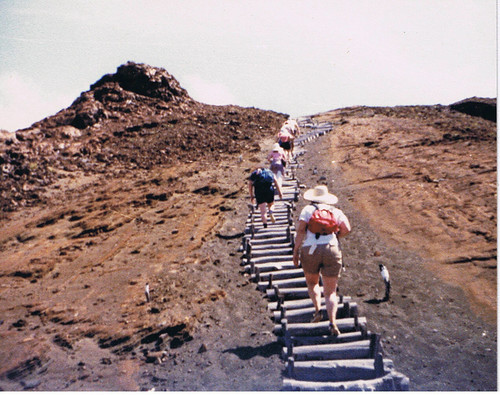
Photographic Example (b): Bright Angel Trail, Grand Canyon (looking down on a landscape):

Poetic Example: Excerpt from "Song of the Redwood-Tree" by Walt Whitman:
The flashing and golden pageant of California!
The sudden and gorgeous drama—the sunny and ample lands;
The long and varied stretch from Puget Sound to Colorado south;
Lands bathed in sweeter, rarer, healthier air—valleys and mountain cliffs;
The fields of Nature long prepared and fallow—the silent, cyclic chemistry;
The slow and steady ages plodding—the unoccupied surface ripening—the rich ores forming beneath;
At last the New arriving, assuming, taking possession,
A swarming and busy race settling and organizing every where;
Ships coming in from the whole round world, and going out to the whole world,
To India and China and Australia, and the thousand island paradises of the Pacific;
Populous cities—the latest inventions—the steamers on the rivers—the railroads—with many a thrifty farm, with machinery,
And wool, and wheat, and the grape—and diggings of yellow gold.
Here Whitman takes a bird's eye view, giving the reader a panoramic shot, like that of the Bright Angel Trail. His vision encompasses "the long and varied stretch from Puget Sound to Colorado south" and beyond, even out to the "whole wide world." He paints his landscape in broad brush strokes, in contrast to Kooser's detail.
3. Empty Landscapes
"Although landscapes usually need to have a strong focal point, this is the perfect contradiction to that rule. A landscape which is almost entirely without stark features can have just as much effect as one where the viewer's eye is drawn straight to a particular object. You might concentrate on the textures of sand, for example, or the shape defined by a curving river with the sun glinting off it." -- PAPG
Photographic Example: Sun on grass:

Poetic Example: Excerpt from "Foggy Street" by Andrei Voznesensky (Selected Poems of Andrei Voznesensky, Grove Press, 1964):
A fogbound suburb, like a fat
Cock-pigeon.
Like anchor-buoys
The militiamen.
Foggy weather.
What century is it? What era?
Everything's shattered, delirious.
The people, as if
they'd been taken apart.
Voznesensky uses simile to explore the textures of fog ("like a fat/Cock-pigeon,/Like anchor-buoys"). While his similes lend structure to the image, his deliberate lack of specificity diffuses that image, in effect making it foggy ("What century is it? What era?") As with an empty landscape, his poem sets a visual (and emotional) tone.
4. Movement
"If you want to convey the merest hint of a breeze in a golden cornfield, you'll need a slightly faster shutter speed than if you want to convey a gale rushing through the treetops. When it comes to water, however, it's a little more subjective. Some prefer a very fast shutter speed which captures every last droplet of a crashing wave, while others prefer a shutter speed ... which turns wild waves into nothing more than fluffy cotton wool." -- PAPG
Photographic Example: Fountain at the Tampa Bay Performing Arts Center:

Poetic Example: "Pien River blocked by Ice" by Tu Mu in Poems of the Late T’ang, translated and edited by A.C. Graham (Penguin, 1965):
For a thousand miles along the river, when the ice begins to close,
Harness jades and girdle jaspers tinkle at the jagged edge.
The drift of life’s no different from the water under the ice
Hurrying Eastward day and night while no one notices.
Tu Mu evokes movement in each of the four lines of his poem. Furthermore, he evokes acceleration. Movement is slow in "when the ice begins to close" -- accomplished by the word "begins." "For a thousand miles" gives the reader a top-down, panoramic view, much as Whitman did with California.
Tu Mu zooms in to the "jagged edge" with his next line. The tinkling of ice-enclosed plants both introduces sound and speeds up the motion that causes them to tinkle. The word "drift" in the third line accelerates movement further. By the fourth line the movement is "hurrying."
5. Animals and Nature: Go Down to Their Level
"[T]he majority of the animals you will be photographing are likely to be much smaller than you, and you will not normally get a good picture by standing over the creature and photographing it from above. (The obvious exception to this is when you are in a helicopter hovering above the Florida Keys as several thousand pink flamingos take flight!) Ideally you should shoot with your lens looking up at the animal's eyes, rather than down at them. Obviously, this is not always possible, but if you can manage it your pictures will have more impact as a result." -- PAPG
Photographic Example: Skipper on Lantana:

Poetic Example: Excerpt from "The Exposed Nest" by Robert Frost:
You were forever finding some new play.
So when I saw you down on hands and knees
In the meadow, busy with the new-cut hay,
Trying, I thought, to set it up on end,
I went to show you how to make it stay,
If that was your idea, against the breeze,
And, if you asked me, even help pretend
To make it root again and grow afresh.
But ’twas no make-believe with you to-day,
Nor was the grass itself your real concern,
Though I found your hand full of wilted fern,
Steel-bright June-grass, and blackening heads of clover.
’Twas a nest full of young birds on the ground
The cutter-bar had just gone champing over
(Miraculously without tasting flesh)
And left defenseless to the heat and light.
The characters in Frost's poem go down to animal level, beginning with the second line ("down on hands and knees"). Frost does not show the reader the young birds outright. Instead, he pans to them, moving the reader's line of sight from hay to fern to grass to clover (which have ended up in the child's hand) and finally to the nest. In this way, he provides a visual background and context for the true subject of his verbal photograph.
6. Fill the frame
"Whether closing in on a beautiful flower or a monkey at the zoo, if you frame your subject very tightly, the resulting picture will be far more dramatic than one which has a lot of extraneous background. Think of it as a classic animal portrait, where you want the viewer to concentrate on its features, the texture of its fur or feathers and to have eye-to-eye contact with it." -- PAPG
Photographic Example: Magnolia:
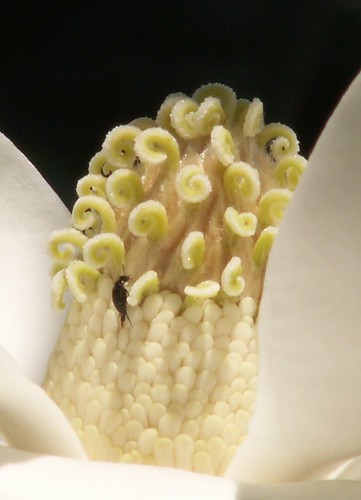
Poetic Example: Basho, trans. by Lucien Stryck:
Orchid breathing
incense into
butterfly wings.
Basho's haiku takes the reader right into the heart of the orchid. Even his butterfly is presented not in toto, but as a feature: its wings.
7. Give it some space
"On the other hand, you could ignore all the advice about filling the frame. The result might turn out to be a photograph which is much more striking and dramatic than an ordinary animal portrait. Look at your subject's surroundings. If they would add to rather than detract from your final image, think about including them. Simple is still best, however, so try to isolate your subject against a plain background, whether or not you intend to include its surroundings." -- PAPG
Photographic Example: Anole:

Poetic Example: "Of Molluscs" by May Sarton:
As the tide rises, the closed mollusc
Opens a fraction to the ocean's food,
Bathed in its riches. Do not ask
What force would do, or if force could.
A knife is of no use against a fortress.
You might break it to pieces as gulls do.
No, only the rising tide and its slow progress
Opens the shell. Lovers, I tell you true.
You who have held yourselves closed hard
Against warm sun and wind, shelled up in fears
And hostile to a touch or tender word --
The ocean rises, salt as unshed tears.
Now you are floated on this gentle flood
That cannot force or be forced, welcome food
Salt as your tears, the rich ocean's blood,
Eat, rest, be nourished on the tide of love.
Sarton's "plain background" here is the tide, while her central subject (and metaphor) is the mollusc. Visually, the tide resembles the plants in Frost's poem -- both serve as plain backgrounds against which the reader sees the subject -- but with some key differences. In Sarton's poem the tide and mollusc act together and are presented as a coordinated image, rather than the background directing the reader's eye.
8. Portraiture: The face
"A close-up of your sitter's face is a very strong form of portraiture. As there are no distractions from the backdrop, their expression is vital and will say a lot about the person. A composition which shows them looking directly at the camera will have a great deal of impact, while one where they have turned their head very slightly one way or the other will send out an altogether different message." -- PAPG
Photographic Example (a): Mary and minpin:

Poetic Example (a): Excerpt from "After the Revolution" by Marilyn Hacker (Separations, Knopf, 1976):
Milo remembered
a child on the beach, a fox-faced little girl
carving something from driftwood. It was late August,
early evening. He was nineteen. He gave her
half his cheese and two tomatoes. She was carving
an old woman in a shawl. Cheese brine
on her fingers stained the dry wood. Her hair
was cropped against lice, gold stubble on her neck.
Hacker's characters do not look directly at the reader. Milo looks at the girl on the beach. Though "fox-faced," the girl faces away from the reader -- one sees the back of her neck. The reader's attention is drawn more toward the action of carving, to the carved object, and to Milo's action of sharing his food.
Contrast with Margaret Atwood's more direct approach to the face.
Photographic Example (b): Fisherman mug:

Poetic Example (b): Excerpt from "Five Poems for Dolls" by Margaret Atwood:
i.
Behind glass in Mexico
this clay doll draws
its lips back in a snarl;
despite its beautiful dusty shawl,
it wishes to be dangerous.
ii
See how the dolls resent us,
with their bulging foreheads
and minimal chins, their flat bodies
never allowed to bulb and swell,
their faces of little thugs.
This is not a smile,
this glossy mouth, two stunted teeth;
the dolls gaze at us
with the filmed eyes of killers.
9. Portraiture: Head and shoulders
"Because a head-and-shoulders portrait reveals more about the person and the backdrop, there are more factors to take into consideration. This includes what they are wearing and the position of their hands." -- PAPG
Photographic Example: Art Center room divider installation:

Poetic Example: Excerpt from "The Love Song of J. Alfred Prufrock" by T.S. Eliot:
And I have known the arms already, known them all --
Arms that are braceleted and white and bare
[But in the lamplight, downed with light brown hair!]
It is perfume from a dress
That makes me so digress?
Arms that lie along a table, or wrap about a shawl.
And should I then presume?
And how should I begin?
Here Eliot mixes close-up and backdrop. In extreme close-up, the reader sees hair on the arms. But the arms are not disembodied. Their background includes lamplight, perfume, dress, table, and shawl. Those props in turn suggest the specific environment of Eliot's poem.
10. Portraiture: Backgrounds
"The backdrop you choose for a portrait is almost as important as the person you are photographing. Keep it simple, as anything too complex or colorful is going to be a distraction. Try to relate the backdrop to the subject and think about what you are trying to say about the person." -- PAPG
Photographic Example: Ranger at Castillo de San Marcos, St. Augustine:

Poetic Example: Excerpt from "After Twenty Years" by Adrienne Rich:
Two women sit at a table by a window. Light breaks
unevenly on both of them.
Their talk is a striking of sparks
which passers-by in the street observe
as a glitter in the glass of that window.
Rich first aims her lens from inside the window. With the women in the foreground, her background is made up of the window, the light coming in, and passers-by. Although "passers-by" may sound complex, Rich presents them monolithically. We don't know who they are, how many, or what they look like, only that they are objects in motion. By the end of the passage, the reader becomes one of them; the camera lens moves from the inside to the outside.
11. Still Life: Keep it simple
"Often it is the most ordinary subjects that can provide interest in a still-life composition, especially if several items are brought together which conjure up a mood or feeling.... Avoid cluttering the picture with too many objects as, again, this will simply become confusing. Instead, start with one object, adding another, then another, until you have a composition that works. Think about the shapes and colors created by the objects you have chosen, and try to make them work harmoniously with each other. For example, contrast curved edges with harder straight lines." -- PAPG
Photographic Example: Striped sheets and pot holder:
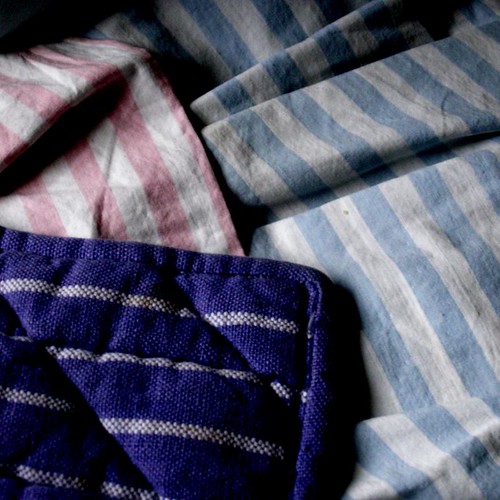
Poetic Example: Poem #204 by Emily Dickinson:
A slash of Blue --
A sweep of Gray --
Some scarlet patches on the way,
Compose an Evening Sky --
A little purple -- slipped between --
Some Ruby Trousers hurried on --
A Wave of Gold --
A Bank of Day --
This just makes out the Morning Sky.
Dickinson adds images one at a time, like still shots overlaid, to build her pictures of evening and morning sky. Each image is a concise object. Across objects, she varies her descriptors: slash, sweep, patches, slipped, wave, bank. Her one line involving metaphor marks the transition between evening and morning.
12. Still Life: Backgrounds and textures
"As with portraiture, the background used in a still-life composition is equally important as the objects you are photographing. It can complement or contrast, but again, you need to consider why you are using a certain type of background and what relevance it has to the photograph. Anything goes, whether it's a plain piece of white card to emphasize a black object, a strip of tin foil for a high-tech, futuristic appearance, or a piece of hessian sack for a rustic feel." -- PAPG
Photographic Example: Shrimp plant given a black background and watercolor effects:
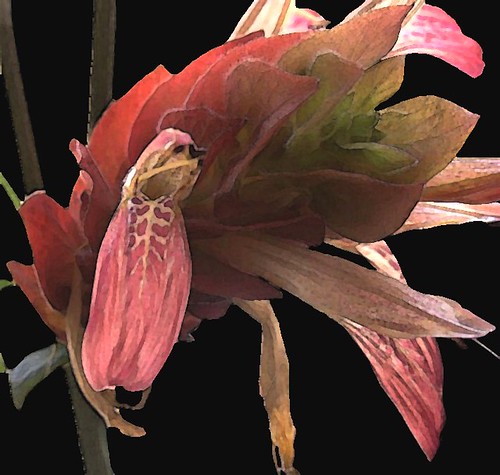
Poetic Example: Excerpt from "Darkness" by Lord Byron:
I had a dream, which was not all a dream.
The bright sun was extinguish'd, and the stars
Did wander darkling in the eternal space,
Rayless, and pathless, and the icy earth
Swung blind and blackening in the moonless air;
Morn came and went--and came, and brought no day,
And men forgot their passions in the dread
Of this their desolation; and all hearts
Were chill'd into a selfish prayer for light:
And they did live by watchfires--and the thrones,
The palaces of crowned kings--the huts,
The habitations of all things which dwell,
Were burnt for beacons; cities were consum'd,
And men were gather'd round their blazing homes
To look once more into each other's face;
Happy were those who dwelt within the eye
Of the volcanos, and their mountain-torch:
A fearful hope was all the world contain'd;
Forests were set on fire--but hour by hour
They fell and faded--and the crackling trunks
Extinguish'd with a crash--and all was black.
In addition to being the title, darkness provides the background to Lord Byron's poem. His characters live in darkness, which also determines their behavior. Euphemisms for darkness are paired with the poem's episodes: extinguish'd, wander darkling, rayless, blind and blackening, desolation, prayer for light, fell and faded.
13. Close-up and macro photography: Thinking about the composition
"There are two basic choices in the composition of macro photographs. Do you crop in tightly, isolating the subject from its environment and emphasizing the quality which attracted you to it (its texture, for example)? Or do you step back slightly and show the subject in the context of its surroundings? There is no right or wrong choice..." -- PAPG
Photographic Example: Hibiscus (Note: my handout uses a close crop of the center of this shot):
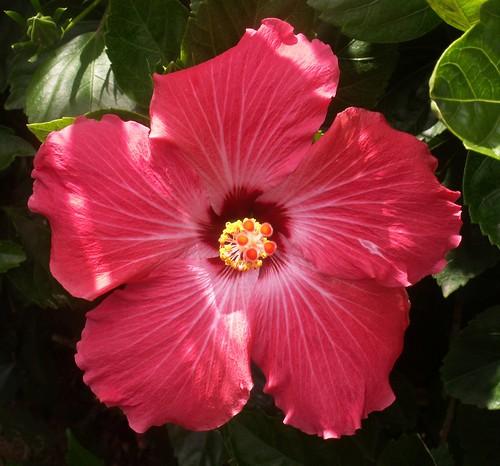
Poetic Example: Excerpt from "Cut" by Sylvia Plath:
What a thrill ----
My thumb instead of an onion.
The top quite gone
Except for a sort of hinge
Of skin,
A flap like a hat,
Dead white.
Then that red plush.
Plath begins with an extreme close-up of the top of her thumb, then moves in even closer with, "Then that red plush." In contrast to Dickinson's one-line descriptors built into a multi-layered scene, Plath probes the depths of a single image.
Thanks to everyone who attended!
Elissa Malcohn's Deviations and Other Journeys 
Promote Your Page Too
Vol. 1, Deviations: Covenant (2nd Ed.) Vol. 2, Deviations: Appetite Vol. 3, Deviations: Destiny Free downloads at the Deviations website and on Smashwords.

This work is licensed under a Creative Commons Attribution-NonCommercial-ShareAlike 2.5 License.
Workshops this past weekend included Val Esker's "Giving Voice to Your Verse," with pointers on performance; Joyce Shiver's "Laugh a Little: writing the humor poem;" and my presentation, "Worth a Thousand Words: Using Photographic Principles in Poetry." During the Spring Fling's planning phase, I was asked to give "a workshop on poetry and photography" because of my involvement in both. I'd already given a workshop in Ekphrastic poetry -- poetry based on works of art (including photos) -- so I wanted to do something different this time. (Continued...)
A single poem can include many elements. I focused solely on visual elements and on ways to convey different visual effects, matching photographic techniques to their poetic counterparts. These effects can also be combined in a single poem and can overlay each other.
Pointers on technique came from Photography: A Practical Guide, by Alisa McWhinnie and Philip Andrews (Carlton Books, 2004; referred to below as PAPG). The photos are mine. Along with their counterpart poems, they covered the topics of landscape, portrait, still-life, and close-up/macro shots. Here's an online version of my handout, incorporating some of my comments.
1. Landscape: Framing
"One of the most pleasing ways to lead your viewer into a landscape photograph is by framing a distant focal point with an object in the foreground. Boughs of trees do this perfectly, as do gateways, arches, and other architectural features." -- PAPG
Photographic Example: a shot taken from my back yard on a foggy morning:

Poetic Example: excerpt from "Grandpa Vogt’s—1959" by Ted Kooser:
... Everyone’s heads have turned
to elongate the table’s view -- a last supper twisted
toward a horizon where the Christmas tree, crowned
by a window, sets into itself half inclined.
Kooser's entire poem presents a photograph: the color (and texture) of the turkey, the pattern on the potato bowl, and more. This excerpted passage shows a particular photographic aspect: framing. In this case, "everyone's heads" provide the same framing as the trees in the foreground of my photo of morning fog, for both elongate the view. The Christmas tree sits in the photographic center in the poem, much as the fog-shrouded tree does in the photo.
Kooser's poem incorporates other photographic concepts -- for example, the close-up in "rubbing lightly wrinkled hands atop their laps." (Click on the link to access the full poem.)
2. Landscape: Viewpoint
"Taking a low viewpoint can dramatically increase the impact of a photograph, especially when combined with a wideangle lens. By crouching down low, you suddenly find you have a strong foreground interest with which to draw the observer into the picture. If shooting from a low viewpoint, look out for strong shapes and texture and, in particular, diagonal lines that start from the outer edges of the frame and extend to a point within the frame….Taking the other extreme, you could find a spot which allows you to look down on the landscape unfolding in front of you. This will give an immense feeling of space and will allow you to include the many features -- both natural and man-made -- which are characteristic of the modern landscape." -- PAPG
Photographic Example (a): Darwin Steps, Bartolome, Galapagos Islands (shooting from low viewpoint):

Photographic Example (b): Bright Angel Trail, Grand Canyon (looking down on a landscape):

Poetic Example: Excerpt from "Song of the Redwood-Tree" by Walt Whitman:
The flashing and golden pageant of California!
The sudden and gorgeous drama—the sunny and ample lands;
The long and varied stretch from Puget Sound to Colorado south;
Lands bathed in sweeter, rarer, healthier air—valleys and mountain cliffs;
The fields of Nature long prepared and fallow—the silent, cyclic chemistry;
The slow and steady ages plodding—the unoccupied surface ripening—the rich ores forming beneath;
At last the New arriving, assuming, taking possession,
A swarming and busy race settling and organizing every where;
Ships coming in from the whole round world, and going out to the whole world,
To India and China and Australia, and the thousand island paradises of the Pacific;
Populous cities—the latest inventions—the steamers on the rivers—the railroads—with many a thrifty farm, with machinery,
And wool, and wheat, and the grape—and diggings of yellow gold.
Here Whitman takes a bird's eye view, giving the reader a panoramic shot, like that of the Bright Angel Trail. His vision encompasses "the long and varied stretch from Puget Sound to Colorado south" and beyond, even out to the "whole wide world." He paints his landscape in broad brush strokes, in contrast to Kooser's detail.
3. Empty Landscapes
"Although landscapes usually need to have a strong focal point, this is the perfect contradiction to that rule. A landscape which is almost entirely without stark features can have just as much effect as one where the viewer's eye is drawn straight to a particular object. You might concentrate on the textures of sand, for example, or the shape defined by a curving river with the sun glinting off it." -- PAPG
Photographic Example: Sun on grass:

Poetic Example: Excerpt from "Foggy Street" by Andrei Voznesensky (Selected Poems of Andrei Voznesensky, Grove Press, 1964):
A fogbound suburb, like a fat
Cock-pigeon.
Like anchor-buoys
The militiamen.
Foggy weather.
What century is it? What era?
Everything's shattered, delirious.
The people, as if
they'd been taken apart.
Voznesensky uses simile to explore the textures of fog ("like a fat/Cock-pigeon,/Like anchor-buoys"). While his similes lend structure to the image, his deliberate lack of specificity diffuses that image, in effect making it foggy ("What century is it? What era?") As with an empty landscape, his poem sets a visual (and emotional) tone.
4. Movement
"If you want to convey the merest hint of a breeze in a golden cornfield, you'll need a slightly faster shutter speed than if you want to convey a gale rushing through the treetops. When it comes to water, however, it's a little more subjective. Some prefer a very fast shutter speed which captures every last droplet of a crashing wave, while others prefer a shutter speed ... which turns wild waves into nothing more than fluffy cotton wool." -- PAPG
Photographic Example: Fountain at the Tampa Bay Performing Arts Center:

Poetic Example: "Pien River blocked by Ice" by Tu Mu in Poems of the Late T’ang, translated and edited by A.C. Graham (Penguin, 1965):
For a thousand miles along the river, when the ice begins to close,
Harness jades and girdle jaspers tinkle at the jagged edge.
The drift of life’s no different from the water under the ice
Hurrying Eastward day and night while no one notices.
Tu Mu evokes movement in each of the four lines of his poem. Furthermore, he evokes acceleration. Movement is slow in "when the ice begins to close" -- accomplished by the word "begins." "For a thousand miles" gives the reader a top-down, panoramic view, much as Whitman did with California.
Tu Mu zooms in to the "jagged edge" with his next line. The tinkling of ice-enclosed plants both introduces sound and speeds up the motion that causes them to tinkle. The word "drift" in the third line accelerates movement further. By the fourth line the movement is "hurrying."
5. Animals and Nature: Go Down to Their Level
"[T]he majority of the animals you will be photographing are likely to be much smaller than you, and you will not normally get a good picture by standing over the creature and photographing it from above. (The obvious exception to this is when you are in a helicopter hovering above the Florida Keys as several thousand pink flamingos take flight!) Ideally you should shoot with your lens looking up at the animal's eyes, rather than down at them. Obviously, this is not always possible, but if you can manage it your pictures will have more impact as a result." -- PAPG
Photographic Example: Skipper on Lantana:

Poetic Example: Excerpt from "The Exposed Nest" by Robert Frost:
You were forever finding some new play.
So when I saw you down on hands and knees
In the meadow, busy with the new-cut hay,
Trying, I thought, to set it up on end,
I went to show you how to make it stay,
If that was your idea, against the breeze,
And, if you asked me, even help pretend
To make it root again and grow afresh.
But ’twas no make-believe with you to-day,
Nor was the grass itself your real concern,
Though I found your hand full of wilted fern,
Steel-bright June-grass, and blackening heads of clover.
’Twas a nest full of young birds on the ground
The cutter-bar had just gone champing over
(Miraculously without tasting flesh)
And left defenseless to the heat and light.
The characters in Frost's poem go down to animal level, beginning with the second line ("down on hands and knees"). Frost does not show the reader the young birds outright. Instead, he pans to them, moving the reader's line of sight from hay to fern to grass to clover (which have ended up in the child's hand) and finally to the nest. In this way, he provides a visual background and context for the true subject of his verbal photograph.
6. Fill the frame
"Whether closing in on a beautiful flower or a monkey at the zoo, if you frame your subject very tightly, the resulting picture will be far more dramatic than one which has a lot of extraneous background. Think of it as a classic animal portrait, where you want the viewer to concentrate on its features, the texture of its fur or feathers and to have eye-to-eye contact with it." -- PAPG
Photographic Example: Magnolia:

Poetic Example: Basho, trans. by Lucien Stryck:
Orchid breathing
incense into
butterfly wings.
Basho's haiku takes the reader right into the heart of the orchid. Even his butterfly is presented not in toto, but as a feature: its wings.
7. Give it some space
"On the other hand, you could ignore all the advice about filling the frame. The result might turn out to be a photograph which is much more striking and dramatic than an ordinary animal portrait. Look at your subject's surroundings. If they would add to rather than detract from your final image, think about including them. Simple is still best, however, so try to isolate your subject against a plain background, whether or not you intend to include its surroundings." -- PAPG
Photographic Example: Anole:

Poetic Example: "Of Molluscs" by May Sarton:
As the tide rises, the closed mollusc
Opens a fraction to the ocean's food,
Bathed in its riches. Do not ask
What force would do, or if force could.
A knife is of no use against a fortress.
You might break it to pieces as gulls do.
No, only the rising tide and its slow progress
Opens the shell. Lovers, I tell you true.
You who have held yourselves closed hard
Against warm sun and wind, shelled up in fears
And hostile to a touch or tender word --
The ocean rises, salt as unshed tears.
Now you are floated on this gentle flood
That cannot force or be forced, welcome food
Salt as your tears, the rich ocean's blood,
Eat, rest, be nourished on the tide of love.
Sarton's "plain background" here is the tide, while her central subject (and metaphor) is the mollusc. Visually, the tide resembles the plants in Frost's poem -- both serve as plain backgrounds against which the reader sees the subject -- but with some key differences. In Sarton's poem the tide and mollusc act together and are presented as a coordinated image, rather than the background directing the reader's eye.
8. Portraiture: The face
"A close-up of your sitter's face is a very strong form of portraiture. As there are no distractions from the backdrop, their expression is vital and will say a lot about the person. A composition which shows them looking directly at the camera will have a great deal of impact, while one where they have turned their head very slightly one way or the other will send out an altogether different message." -- PAPG
Photographic Example (a): Mary and minpin:

Poetic Example (a): Excerpt from "After the Revolution" by Marilyn Hacker (Separations, Knopf, 1976):
Milo remembered
a child on the beach, a fox-faced little girl
carving something from driftwood. It was late August,
early evening. He was nineteen. He gave her
half his cheese and two tomatoes. She was carving
an old woman in a shawl. Cheese brine
on her fingers stained the dry wood. Her hair
was cropped against lice, gold stubble on her neck.
Hacker's characters do not look directly at the reader. Milo looks at the girl on the beach. Though "fox-faced," the girl faces away from the reader -- one sees the back of her neck. The reader's attention is drawn more toward the action of carving, to the carved object, and to Milo's action of sharing his food.
Contrast with Margaret Atwood's more direct approach to the face.
Photographic Example (b): Fisherman mug:

Poetic Example (b): Excerpt from "Five Poems for Dolls" by Margaret Atwood:
i.
Behind glass in Mexico
this clay doll draws
its lips back in a snarl;
despite its beautiful dusty shawl,
it wishes to be dangerous.
ii
See how the dolls resent us,
with their bulging foreheads
and minimal chins, their flat bodies
never allowed to bulb and swell,
their faces of little thugs.
This is not a smile,
this glossy mouth, two stunted teeth;
the dolls gaze at us
with the filmed eyes of killers.
9. Portraiture: Head and shoulders
"Because a head-and-shoulders portrait reveals more about the person and the backdrop, there are more factors to take into consideration. This includes what they are wearing and the position of their hands." -- PAPG
Photographic Example: Art Center room divider installation:

Poetic Example: Excerpt from "The Love Song of J. Alfred Prufrock" by T.S. Eliot:
And I have known the arms already, known them all --
Arms that are braceleted and white and bare
[But in the lamplight, downed with light brown hair!]
It is perfume from a dress
That makes me so digress?
Arms that lie along a table, or wrap about a shawl.
And should I then presume?
And how should I begin?
Here Eliot mixes close-up and backdrop. In extreme close-up, the reader sees hair on the arms. But the arms are not disembodied. Their background includes lamplight, perfume, dress, table, and shawl. Those props in turn suggest the specific environment of Eliot's poem.
10. Portraiture: Backgrounds
"The backdrop you choose for a portrait is almost as important as the person you are photographing. Keep it simple, as anything too complex or colorful is going to be a distraction. Try to relate the backdrop to the subject and think about what you are trying to say about the person." -- PAPG
Photographic Example: Ranger at Castillo de San Marcos, St. Augustine:

Poetic Example: Excerpt from "After Twenty Years" by Adrienne Rich:
Two women sit at a table by a window. Light breaks
unevenly on both of them.
Their talk is a striking of sparks
which passers-by in the street observe
as a glitter in the glass of that window.
Rich first aims her lens from inside the window. With the women in the foreground, her background is made up of the window, the light coming in, and passers-by. Although "passers-by" may sound complex, Rich presents them monolithically. We don't know who they are, how many, or what they look like, only that they are objects in motion. By the end of the passage, the reader becomes one of them; the camera lens moves from the inside to the outside.
11. Still Life: Keep it simple
"Often it is the most ordinary subjects that can provide interest in a still-life composition, especially if several items are brought together which conjure up a mood or feeling.... Avoid cluttering the picture with too many objects as, again, this will simply become confusing. Instead, start with one object, adding another, then another, until you have a composition that works. Think about the shapes and colors created by the objects you have chosen, and try to make them work harmoniously with each other. For example, contrast curved edges with harder straight lines." -- PAPG
Photographic Example: Striped sheets and pot holder:

Poetic Example: Poem #204 by Emily Dickinson:
A slash of Blue --
A sweep of Gray --
Some scarlet patches on the way,
Compose an Evening Sky --
A little purple -- slipped between --
Some Ruby Trousers hurried on --
A Wave of Gold --
A Bank of Day --
This just makes out the Morning Sky.
Dickinson adds images one at a time, like still shots overlaid, to build her pictures of evening and morning sky. Each image is a concise object. Across objects, she varies her descriptors: slash, sweep, patches, slipped, wave, bank. Her one line involving metaphor marks the transition between evening and morning.
12. Still Life: Backgrounds and textures
"As with portraiture, the background used in a still-life composition is equally important as the objects you are photographing. It can complement or contrast, but again, you need to consider why you are using a certain type of background and what relevance it has to the photograph. Anything goes, whether it's a plain piece of white card to emphasize a black object, a strip of tin foil for a high-tech, futuristic appearance, or a piece of hessian sack for a rustic feel." -- PAPG
Photographic Example: Shrimp plant given a black background and watercolor effects:

Poetic Example: Excerpt from "Darkness" by Lord Byron:
I had a dream, which was not all a dream.
The bright sun was extinguish'd, and the stars
Did wander darkling in the eternal space,
Rayless, and pathless, and the icy earth
Swung blind and blackening in the moonless air;
Morn came and went--and came, and brought no day,
And men forgot their passions in the dread
Of this their desolation; and all hearts
Were chill'd into a selfish prayer for light:
And they did live by watchfires--and the thrones,
The palaces of crowned kings--the huts,
The habitations of all things which dwell,
Were burnt for beacons; cities were consum'd,
And men were gather'd round their blazing homes
To look once more into each other's face;
Happy were those who dwelt within the eye
Of the volcanos, and their mountain-torch:
A fearful hope was all the world contain'd;
Forests were set on fire--but hour by hour
They fell and faded--and the crackling trunks
Extinguish'd with a crash--and all was black.
In addition to being the title, darkness provides the background to Lord Byron's poem. His characters live in darkness, which also determines their behavior. Euphemisms for darkness are paired with the poem's episodes: extinguish'd, wander darkling, rayless, blind and blackening, desolation, prayer for light, fell and faded.
13. Close-up and macro photography: Thinking about the composition
"There are two basic choices in the composition of macro photographs. Do you crop in tightly, isolating the subject from its environment and emphasizing the quality which attracted you to it (its texture, for example)? Or do you step back slightly and show the subject in the context of its surroundings? There is no right or wrong choice..." -- PAPG
Photographic Example: Hibiscus (Note: my handout uses a close crop of the center of this shot):

Poetic Example: Excerpt from "Cut" by Sylvia Plath:
What a thrill ----
My thumb instead of an onion.
The top quite gone
Except for a sort of hinge
Of skin,
A flap like a hat,
Dead white.
Then that red plush.
Plath begins with an extreme close-up of the top of her thumb, then moves in even closer with, "Then that red plush." In contrast to Dickinson's one-line descriptors built into a multi-layered scene, Plath probes the depths of a single image.
Thanks to everyone who attended!

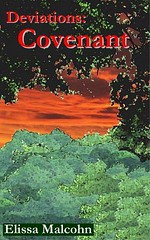 |  |  |
 | Go to Manybooks.net to access Covenant, Appetite, and Destiny in even more formats! |
 | Participant, Operation E-Book Drop. (Logo credit: K.A. M'Lady & P.M. Dittman.) |











0 Comments:
Post a Comment
<< Home